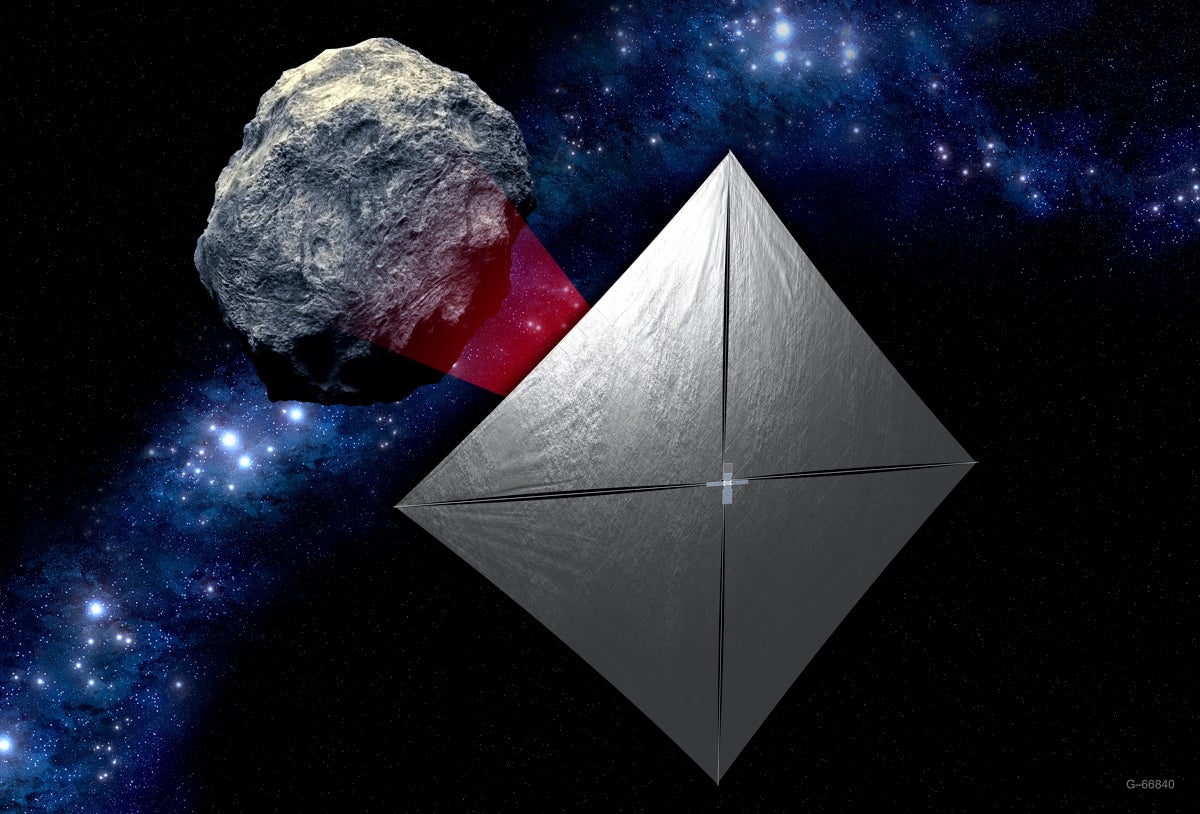Nasa unfurls giant solar sail – and you can see it from Earth
Centuries after it was first theorised, the sunlight propulsion method could herald a new era of space exploration
Your support helps us to tell the story
From reproductive rights to climate change to Big Tech, The Independent is on the ground when the story is developing. Whether it's investigating the financials of Elon Musk's pro-Trump PAC or producing our latest documentary, 'The A Word', which shines a light on the American women fighting for reproductive rights, we know how important it is to parse out the facts from the messaging.
At such a critical moment in US history, we need reporters on the ground. Your donation allows us to keep sending journalists to speak to both sides of the story.
The Independent is trusted by Americans across the entire political spectrum. And unlike many other quality news outlets, we choose not to lock Americans out of our reporting and analysis with paywalls. We believe quality journalism should be available to everyone, paid for by those who can afford it.
Your support makes all the difference.Nasa has unfurled a solar sail in space for the first time, aiming to harness the propulsive power of sunlight for interstellar travel.
The US space agency revealed that it had deployed the solar sail 1,000 kilometres (600 miles) above Earth on Thursday, four months after launching it into space. The first images from the craft are expected to be available on Wednesday.
Measuring 80 square metres – roughly the same size as six parking spaces – Nasa said the craft will be visible from Earth and as bright as the brightest star in the night sky under ideal viewing conditions.

“The advanced composite solar sail system introduces a new way to explore the cosmos,” Nasa said. “Much like a sail boat is propelled by wind, a solar sail spacecraft is pushed by light from the Sun.”
The system works by utilising the pressure exerted by photons as they bounce off the reflective sail, thus eliminating the need for heavy propulsion equipment like rockets.
The method allows a spacecraft to travel indefinitely, without the need to refuel or reposition itself – however its size and structure makes it vulnerable to damage from dust, debris and other particles.

The next-generation propulsion method, which was first theorised in the 17th century, has been limited by the materials and structure that the sail requires to be effective.
Recent advances have finally made it possible to harness the force of sunlight on the sail, which is roughly equivalent to the weight of a paperclip on Earth.
“Booms have tended to be either heavy and metallic or made of lightweight composite with a bulky design – neither of which work well for today’s small spacecraft. Solar sails need very large, stable, and lightweight booms that can fold down compactly,” said Keats Wilkie, the mission’s principal investigator at Nasa’s Langley Research Center in Hampton, Virginia.
“This sail’s booms are tube-shaped and can be squashed flat and rolled like a tape measure into a small package while offering all the advantages of composite materials, like less bending and flexing during temperature changes.”
Future solar sails could be as large as 2,000 square metres – roughly equivalent to half a football pitch – and could potentially power trips to the Moon, Mars and beyond.
“The Sun will continue burning for billions of years, so we have a limitless source of propulsion. Instead of launching massive fuel tanks for future missions, we can launch larger sails that use ‘fuel’ already available,” said Alan Rhodes, the mission’s lead systems engineer at Nasa’s Ames Research Center in California’s Silicon Valley.
“We will demonstrate a system that uses this abundant resource to take those next giant steps in exploration and science.”

Join our commenting forum
Join thought-provoking conversations, follow other Independent readers and see their replies
Comments